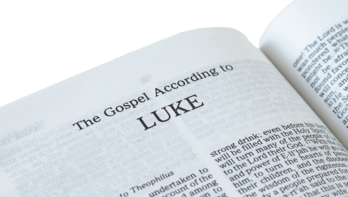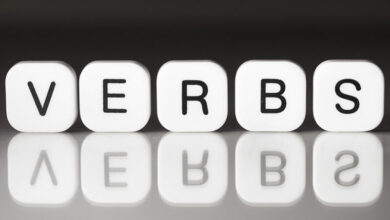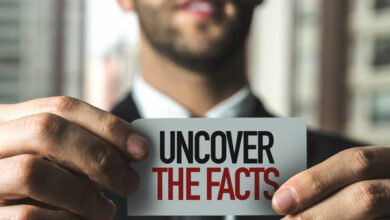The Editor: Mapmaker, Critic and Genius
As an editor you have to beware of two dangerous notions-one, that the audience is captive; two, that your message is a must for your audience. No story has a divine right to be read; no issue has a divine right to be purchased. In this very visual age, with so much visual competition, you have to work doubly hard to get your words across. Here is an ancient writer, Pliny the Younger, on the eruption of Vesuvius in 79 A.D.: “We saw the sea sucked away by the heaving of the earth. A fearful black cloud forked with great tongues of fire lashed at the heavens, and torrents of ash began to fall from the sky. Although it was daytime we were enveloped by night-not a moonless night, or one dimmed by clouds, but the darkness of a sealed room without light.”
Nouns and verbs
If Pliny had written, “it was horrible; it was ghastly; it was awesome and unforgettable,” those words would have full meaning for him because he was there, but they would have absolutely no meaning for anyone who wasn’t. That’s the problem with the carelessly used adjective. But, fortunately, Pliny was a better writer than that, so this is almost all nouns and verbs. The power of our language is in the noun and the verb which gives action to that noun.
The sixth W
As an editor you need to make sure that your writers are locating the heart of the story. We talk in journalism about the five W’s and the H; the who, what, when, where, why, and how. We need to think about a sixth W, and that’s warmth. The human dimension has become increasingly important in good journalistic writing. If you are going to do a story about the homeless, you get statistics and demographics, and you talk to sociologists and urbanologists and psychologists and health officials, etc. All of that helps, but unless you can get to the homeless person, you don’t have a story. You must get to the humanity of the subject to compete successfully. Here’s an example:
“A smooth bar of soap wrapped neatly in a white handkerchief tucked safely in the breast pocket of a faded leather jacket is all that keeps George from losing himself to the streets. When he wakes each morning from his makeshift bed of newspapers in the subway tunnels of Philadelphia, he heads for the restroom of a nearby bus station or MacDonald’s and begins an elaborate ritual of washing off the dirt and smells of homelessness. First the hands and forearms, then the face and neck, finally the fingernails and feet. . . . George, 28, stocky, round-faced, is a former high school basketball star who once made a living as a construction worker. But after he lost his job just over a year ago his wife kicked him out of the house. . . . Since then he has been on the street, starting from scratch, looking for a job. ‘ . . . He begins brushing his teeth with his forefingers. ‘If I don’t stay clean,’ he mutters, ‘the world ain’t even gonna look at me in the face and I just couldn’t take that.'”
Rhythm
As an editor you have to create a sense of forward movement in your copy, a sense of flow from paragraph to paragraph and idea to idea. When we shape a story for publication most of us create a climax up front to get people into the story. And unless its an inverted pyramid story, we try to create another climax toward the end. But that may not be enough, particularly if your article has some length to it. If we graph a reader’s interest, it is high at the top and then it begins to go down. We can’t let that happen. I would suggest that you strive for a series of climaxes, a series of changes of pace. You can do it with typography, with subtitles and breakouts and so forth, but I think the copy itself benefits from having these changes of pace. It’s like when you read a mystery or a spy novel. At the end of each chapter you have some high level of suspense. You are driven into the next chapter. These are called “suspenses” and your own form of suspenses are something you might work for.
Mapmaker and genius
The journalist is the mapmaker of our world. The words and pictures that you gather as an editor are physically only ink on paper; but they are also symbols for pleasure, adventure, challenge, and discovery. They share, recreate, and enhance.
Lewis Lapham, editor of Harper’s magazine, says that editors occupy a position comparable to that of the literary critic. They are forever evaluating the passing human parade from a perspective and with a moral agenda often invisible to the readers. You have a vision that the ordinary reader does not have. You provide it for that reader. The philosopher, William Arthur Ward, says that genius is recognizing the uniqueness in the unimpressive. It is looking at a colorless caterpillar, an ordinary egg, and a selfish infant, and seeing a butterfly, an eagle and a saint. If you can do that you’re a genius and an editor, because I truly believe that a good editor is a genius.
Your mission statement
You have a contract with your reader. It says that if you read every issue of this publication you will be touched by everything and anything of consequence in the world of our shared subject matter. Another way of saying this is a mission statement. Have you published your mission statement right in the publication? It’s a reminder to you, and the reader can see if you’re following through.
Words
Noah Webster, that man of words, once said, “if we work upon marble it will perish. Time will deface it. If we rear temples they will crumble into dust, but if we work upon immortal minds and imbue them with principles, with the just fear of God and love of our fellow men, we will engrave on those tablets something that will brighten all eternity.” He is speaking about the lasting power of words.
This article was excerpted from a presentation at the 1999 EPA convention by Dr. Peter Jacobi, retired professor of journalism at Indiana University.





